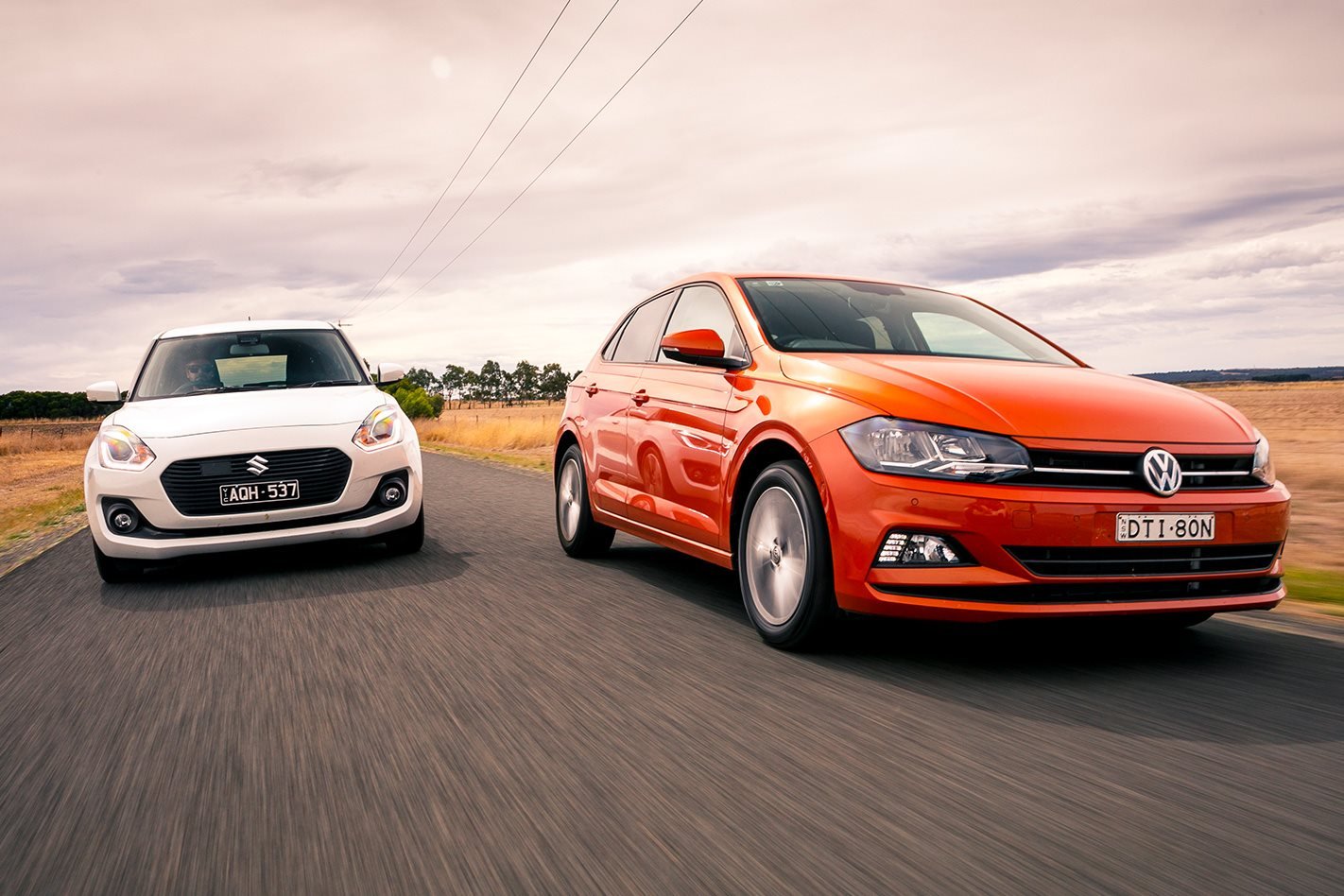It’s a definitive Europe versus Japan battle, pitting the continent’s newest light-class hatchback – Volkswagen’s German-designed, Spanish-built Mk6 Polo – against Asia’s finest baby five-door, the sixth-generation Suzuki Swift.

Offering equipment and safety kit worthy of a larger car with warm-hatch levels of driver appeal, you simply can’t lose with either of these two. But is it the Polo 85TSI or Swift GLX Turbo that best delivers, dollar for dollar?
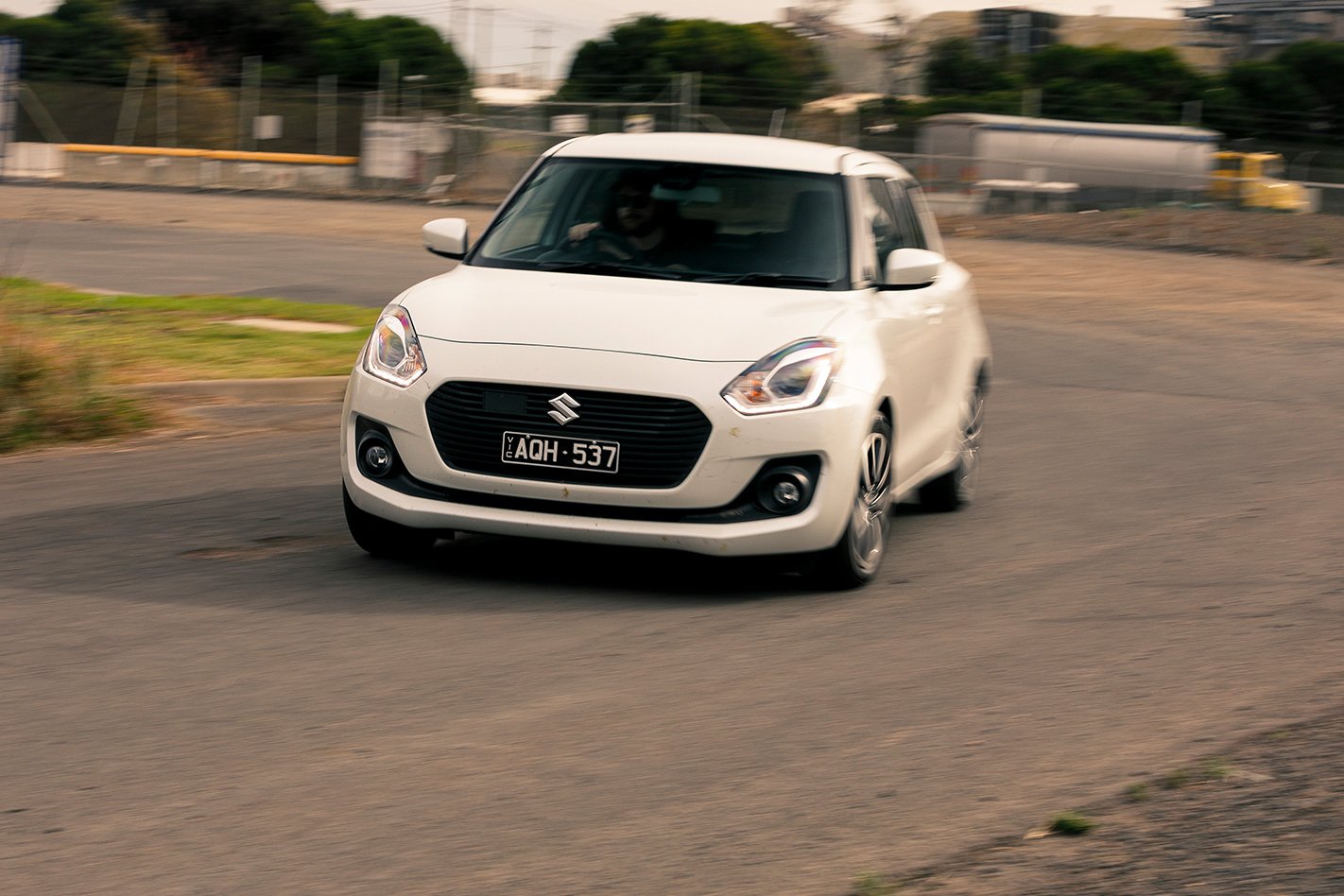
PRICE & EQUIPMENT In isolation, the Swift GLX Turbo (to give its full name, though we’ll simply call it GLX) isn’t a cheap car. At $22,990, it’s approaching mid-level small hatch money, but the fine print will tell you that’s a drive-away sticker, including all on-road costs.
On paper, the Polo 85TSI gets the value gong because you can buy a six-speed manual Comfortline for just $19,490, or $21,990 in seven-speed DSG dual-clutch form. But the Swift GLX’s true competitor is the Polo Launch Edition, which costs a grand more and adds 16-inch alloys, front fogs and rear privacy glass (as per Swift GLX), but also wireless phone charging and dark-tinted LED taillights. And that $22,990 sticker for the DSG version doesn’t include on-road costs.
But Volkswagen is charging just $1000 for drive-away privilege on Comfortline and Launch Edition Polos, and nothing at all on top for the base Polo 70TSI Trendline, which spans $17,990 to $20,490 drive-away.
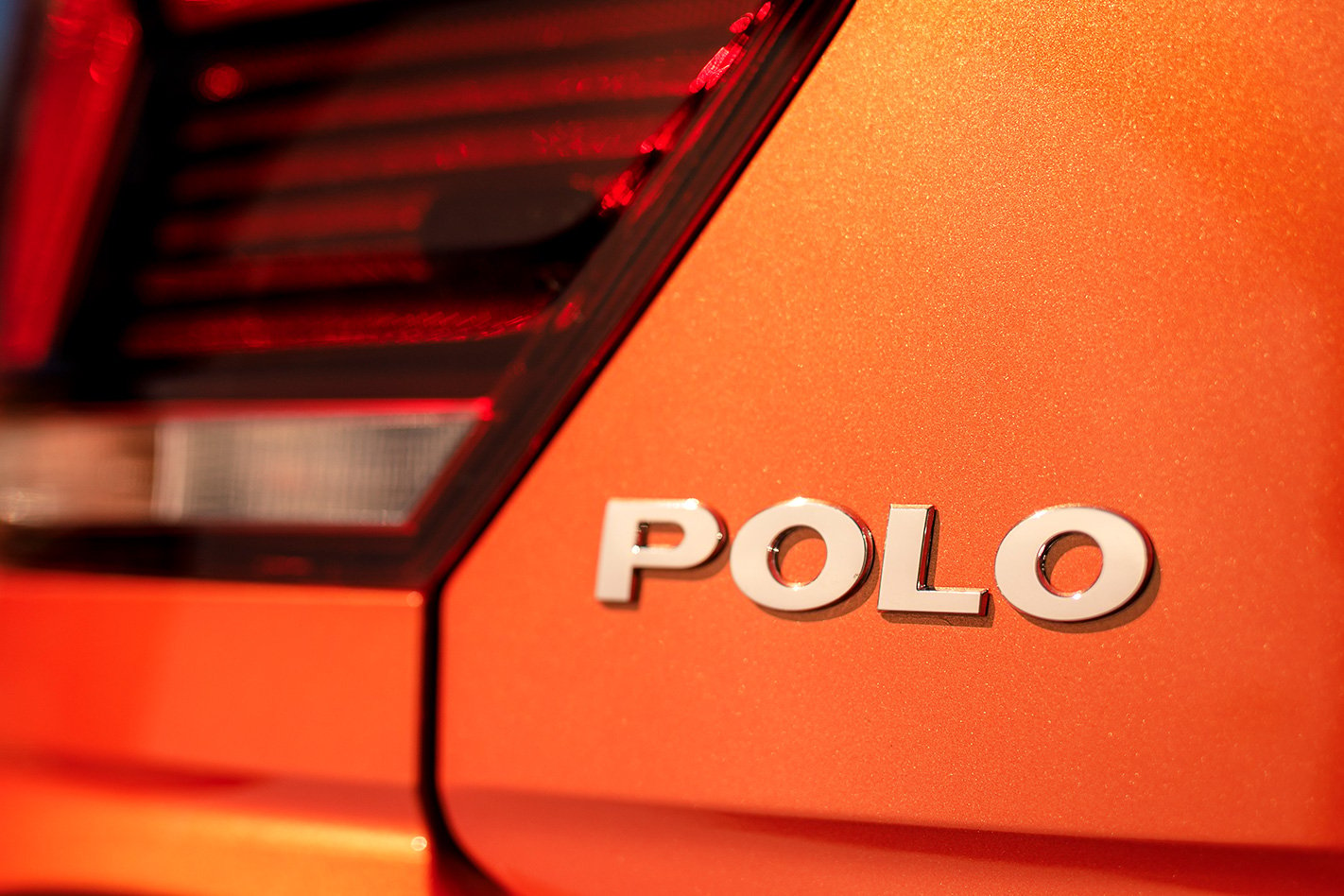
Despite their range-topping status (if you ignore the Swift Sport and forthcoming Polo GTI hot hatches), there are several equipment anomalies in both cars.
The Swift, for instance, only gets a driver’s auto-down power window (you have to hold the switches for the rest) whereas all four Polo windows get the one-touch treatment. And while Suzuki includes digital climate control and keyless entry and start, the Polo persists with push-button ‘Climatic’ air-con (like its predecessors from last decade) and traditional central locking with a metal key.
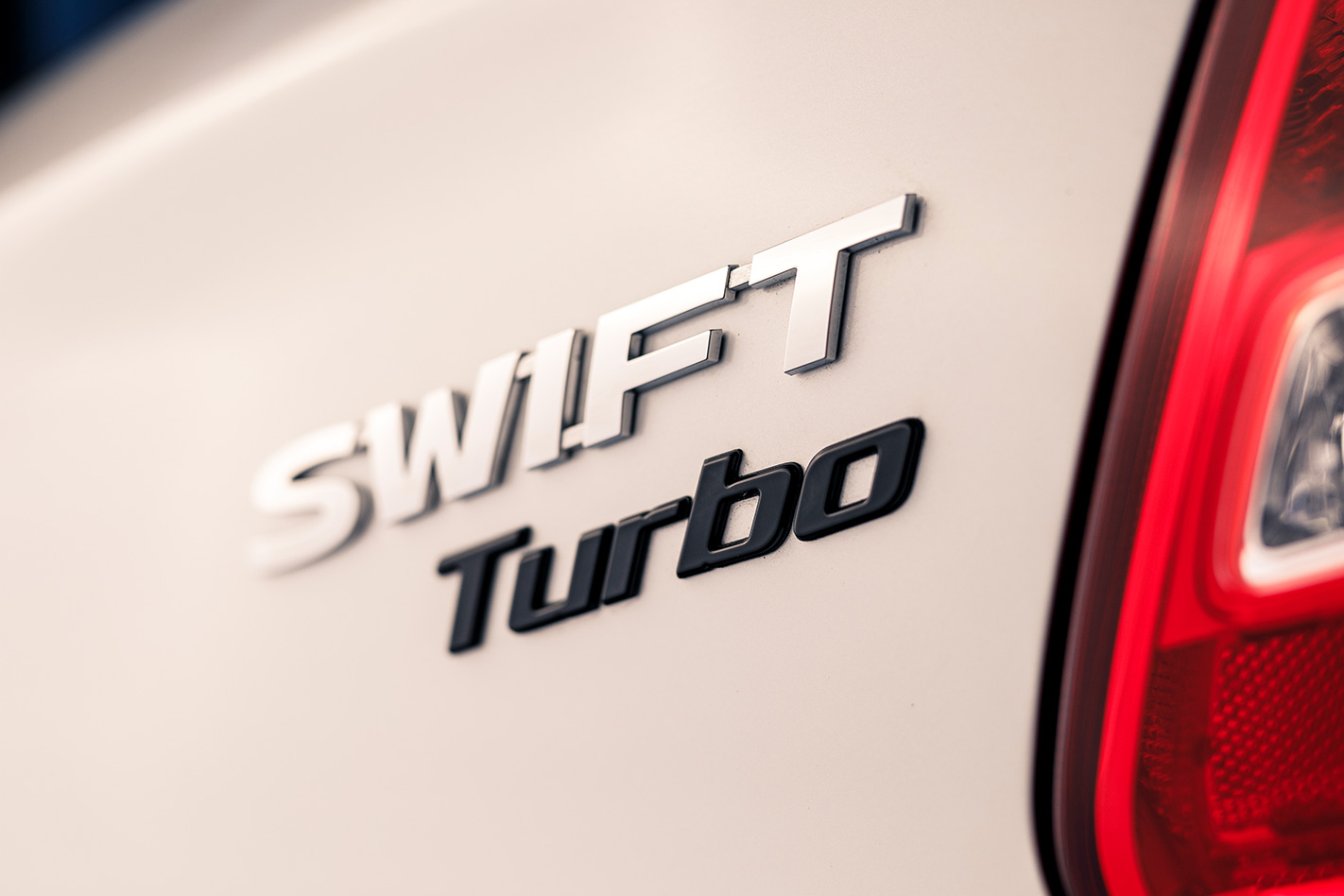
At least the VW adds a digital speedo, a centre-front armrest and rain-sensing wipers, though you only get adaptive cruise-control, auto-folding mirrors, blind-spot monitoring with rear traffic alert, park assist with front and rear parking sensors, and a manoeuvre braking function that protects against parking dents if you pay $1400 extra for the Driver Assistance package.
The Swift gets many of those features as standard, but not the trick sensors or fancy braking smarts. Merely autonomous emergency braking (AEB), as per even the most basic Polo, and one of the most annoyingly over-sensitive collision-alert systems we’ve ever experienced. It’ll keep beeping even when you’re stopped!
That leaves the Swift GLX at mid-$23K drive-away if you option metallic paint, and the Polo 85TSI Launch Edition at close to $26K for the equivalent spec once on-road costs have been added.
Polo – 15/20 Swift – 15/20
INTERIOR & CONNECTIVITY You might pay around $2500 more for the Launch Edition Polo over the Swift GLX, but in several areas you do get more for your money.
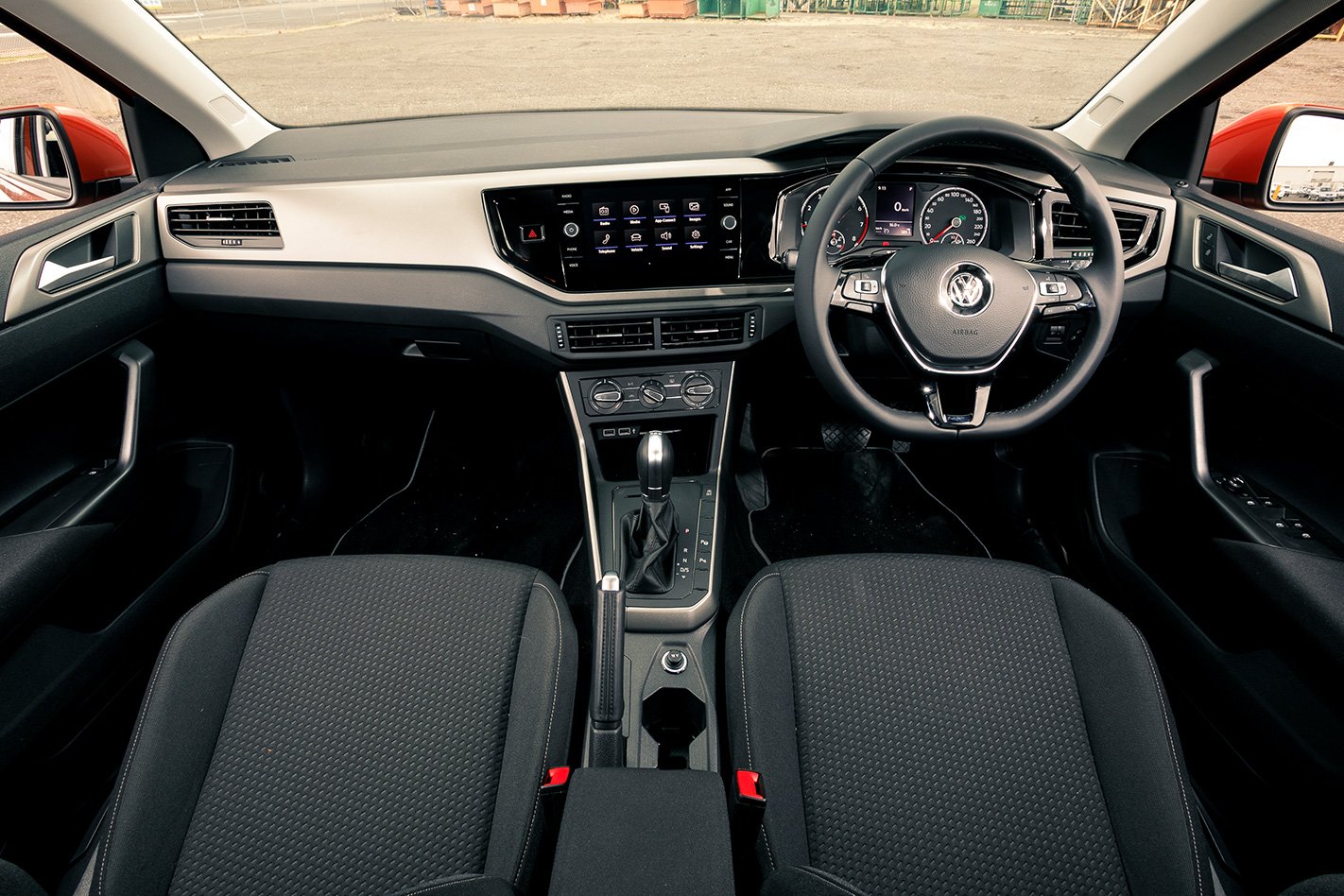
Take the Polo’s interior. Soft-touch plastics, door pockets that will accommodate 1.5-litre water bottles, height-adjustable front seats, a length-adjustable centre-front armrest, proper door grab handles, the same leather-bound steering wheel with piano-black inserts as a Golf, and even the VW’s little aluminium hand-brake button convey the expense that has gone into engineering this car.
It offers a vast range of seating adjustment up front, it remains quiet on almost all road surfaces, and its seamlessly integrated 8.0-inch multimedia touchscreen with smartphone mirroring will dazzle showroom shoppers with its classy appearance and slick operation.
The Swift GLX also sports a reasonably intuitive 7.0-inch multimedia display but you only get a single USB port (the Polo has two) and, infuriatingly, if you turn the car off while your phone is physically connected, you need to unplug it and then replug it back in to make the system aware your phone is there. Both audio systems sound quite strong, with decent bass and volume capability, though only Volkswagen offers audiophiles an opportunity to upgrade (into the forthcoming Polo Beats with a 300-watt stereo system, among other goodies, for $2000 more).
The Swift has its fundamentals right. Its tall roof acts like an awning over the front passengers’ heads, delivering both proper shade and terrific headroom. And its compact three-spoke leather-bound wheel is a delight, as are its huggy front seats with supple cushioning, its cleanly styled instrument dials and its superb vision.
The functionality of its climate control set-up takes some getting used to, however – the centre dial with temp reading doesn’t actually turn; it’s the ‘auto’ dial on the right that adjusts temperature – and alongside the Polo, its plastics are pap. Whereas the Volkswagen’s cabin easily shames most hatches in the class above, the Swift’s dashboard material and door trims are pure econocar – hard, hollow, and cheap, though also likely to be hard-wearing.
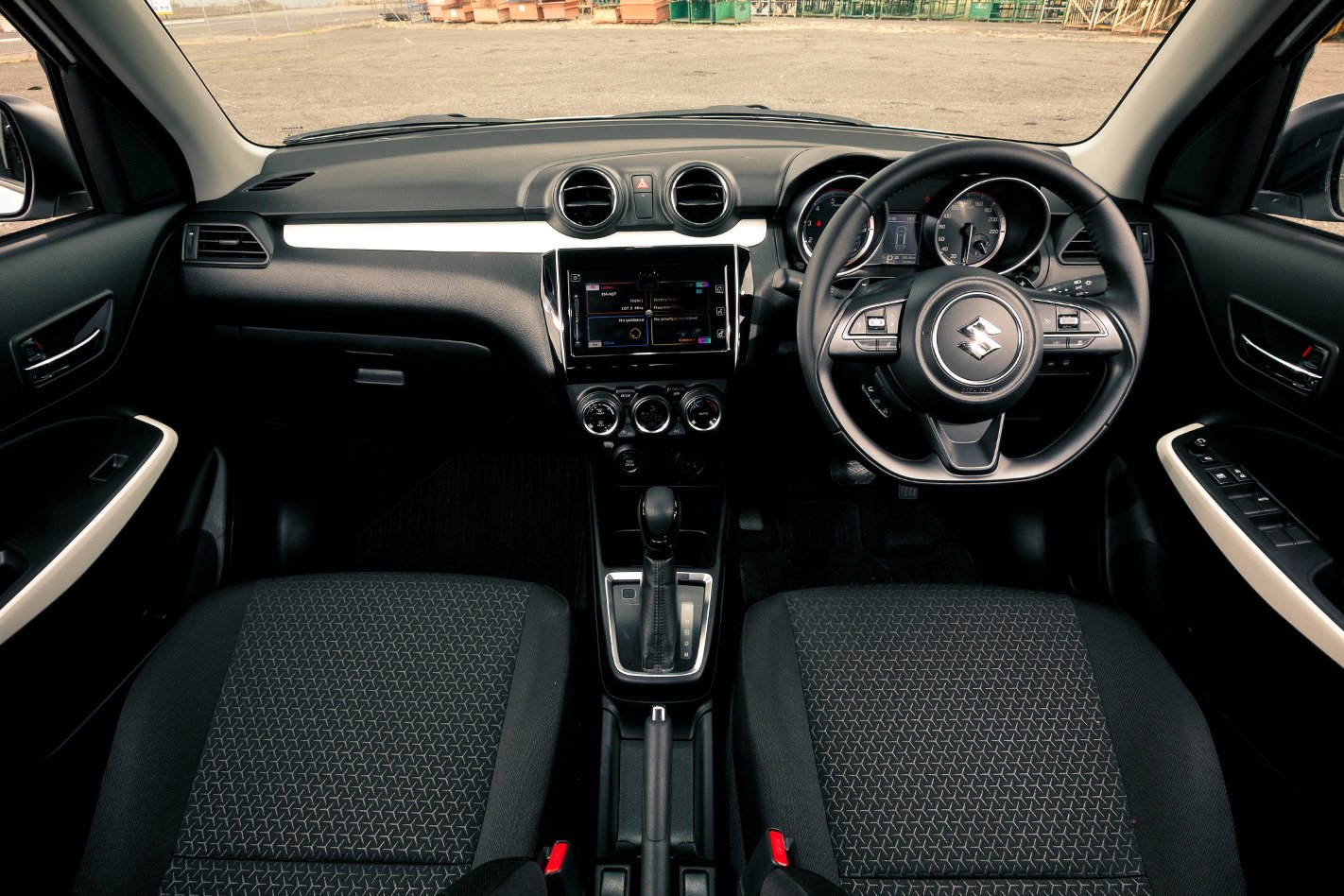
If only the Swift’s characterful interior had the tactility to back up its interesting design.
Thankfully, it hits back hard with a vast rear seat capable of carting around teenage basketballers. There’s legroom and headroom aplenty, though the depth of the Polo’s rear cushion is arguably more comfortable, and it too, offers plenty of space for this size of car. In fact, Volkswagen claims the Mk6 Polo is more spacious than the 1997-2004 Mk4 Golf!
The trade-off for the Swift’s cabin acreage is its modest 242-litre boot, though it still offers useful room. It’s just that the Polo’s austere-looking derriere disguises an excellent 351-litre boot, making it best in class for luggage space.
Polo – 17/20 Swift – 14/20
RIDE & HANDLING If you want to have fun in a 4m-long hatchback, then you’ve come to the right place. Both the Polo 85TSI and Swift GLX know how to have a good time on twisty roads, particularly the torquey, pointy, tail-happy Suzuki.
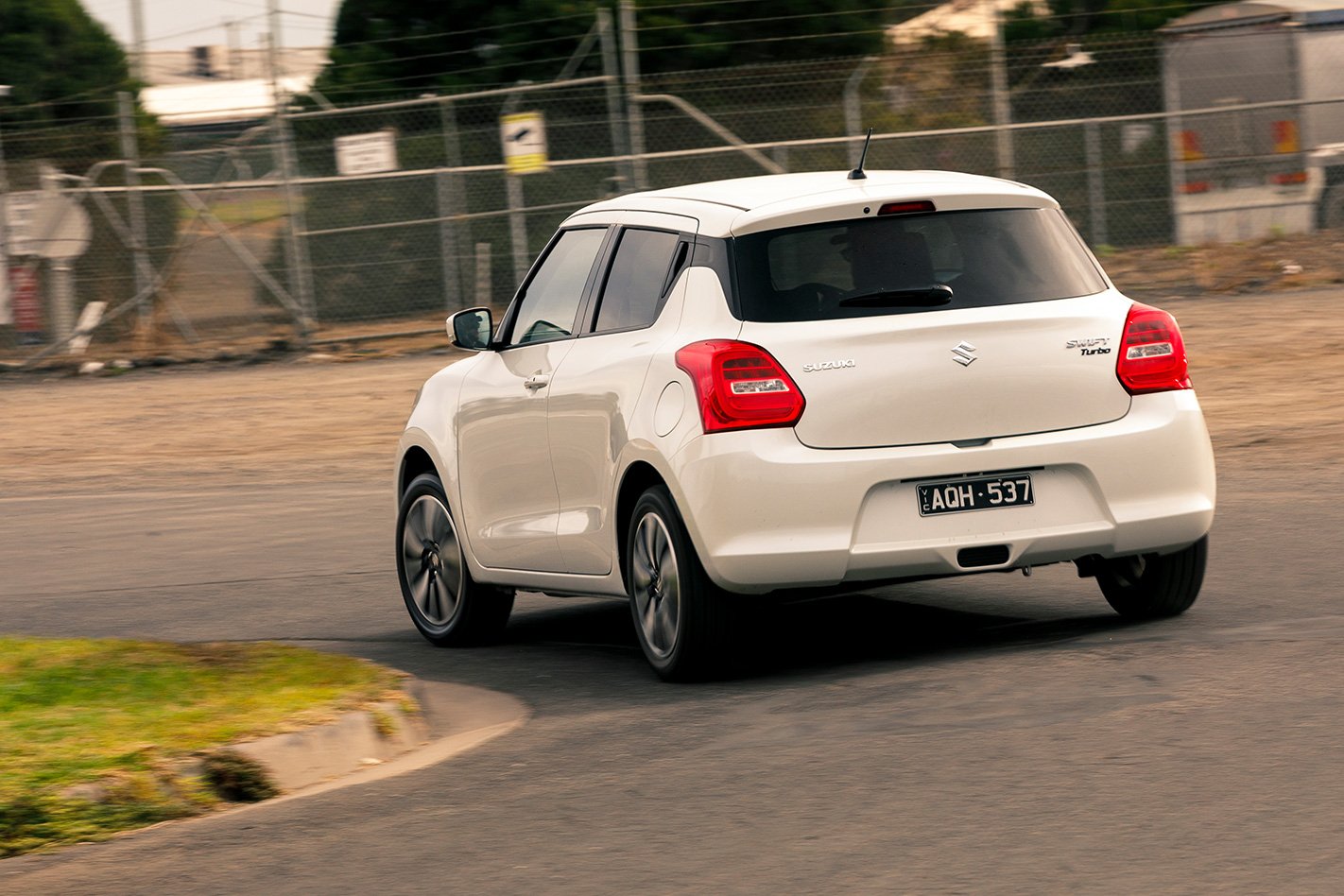
But it’s the VW’s overall polish and Teflon-coated feel – much like the excellent Mk7 Golf it shares mechanical DNA with – that elevates the Polo to class-benchmark status.
One-up, its ride quality is unremarkable, proving a little lumpy and fidgety in urban environments. But with four bodies on board at more than 100km/h over punishing Aussie country roads, the Polo shines with a jewel-like sparkle.
It feels incredibly stable at speed, with a level-riding calmness to it that transcends any preconceived prejudices of this size and type of car. It has the grown-up feel of something much larger and heavier, yet it also has the dynamic balance to make it incredibly confidence-inspiring to drive quickly through corners. It’s a firmer car than a base Golf, but that plays in the Polo’s favour when it comes to animated cornering and crisp steering response on challenging roads.
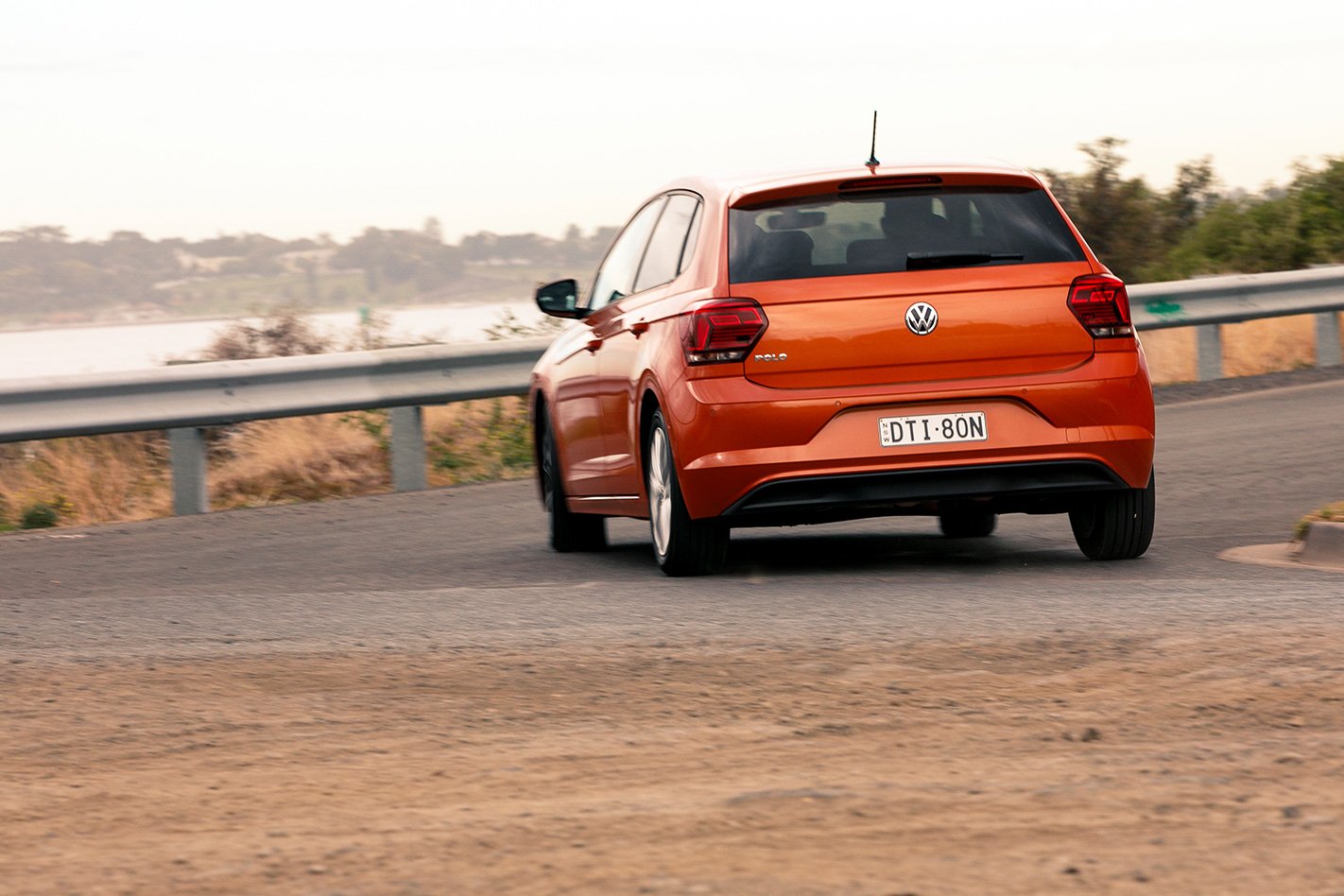
The Swift is also a ripper handler, darting its nose into corners like a baby hot hatch, while adjusting its line with a lift of your right foot. But it ultimately wilts a little as speeds rise and road surfaces deteriorate.
A lack of compression damping means it will kiss its suspension bump stops frequently on roads that barely affect the Polo. Add constant tyre drone and wind noise from both front door frames, and you get the impression that the Swift is a cheaper car than the Polo. It is, of course, but when the Suzuki does such a good job of sitting so well, cornering with such engagement, and riding pretty well at a moderate pace, it’s a shame there isn’t the overall cohesion of the Volkswagen to truly capitalise on its good points.
Polo – 16/20 Swift – 14/20
PERFORMANCE & ECONOMY With a pair of 1.0-litre turbo-petrol triples thrumming away under each bonnet, it’s no surprise that both the Suzuki and VW possess charm and cheek.
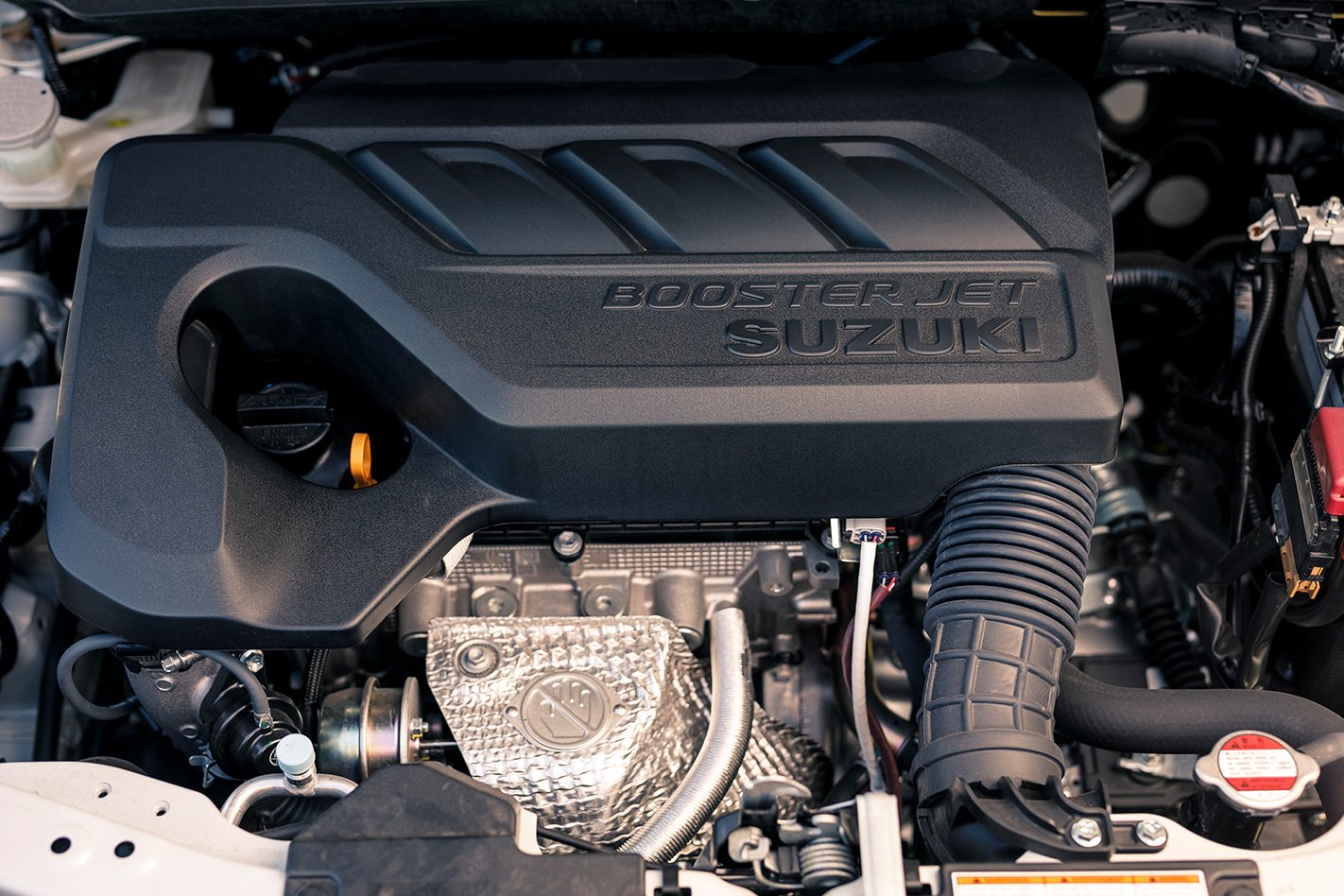
The 998cc Japanese offering punches out 82kW at 5500rpm and 160Nm from 1500-4000rpm, transferring those outputs to the front wheels exclusively via a six-speed torque-converter automatic. Unlike other markets, Australia doesn’t get a manual version.
The German three-pot is a close relative of the Up’s superb 999cc unit, but with a turbocharger in this application. Punching out 85kW at 5000-5500rpm and a strong 200Nm from 2000-3500rpm, with seven gear ratios in DSG models to keep it on song, you’d think the Polo had the performance crown in the bag. But the smaller Swift’s lithe body and mega-chubby bottom-end torque hand it a slight advantage in rolling acceleration, and keep it nipping at the Polo’s heels from a standing start.
For the record, we clocked 0-100km/h in 10.1sec in the Polo and 10.2sec in the Swift, with each car’s standing 400m time registering 17.3sec (at a marginally higher terminal speed in the VW). From 80-120km/h, however, the Swift snatches a decisive victory, beating the Polo by half a second (6.9sec v 7.4). And the Volkswagen then reverses that victory by out-sipping the Swift with a 6.4L/100km fuel-consumption average on test (versus a still-excellent 7.0L/100km). Both engines require 95-octane premium fuel, or higher, but the efficiency benefits negate any cost concerns.
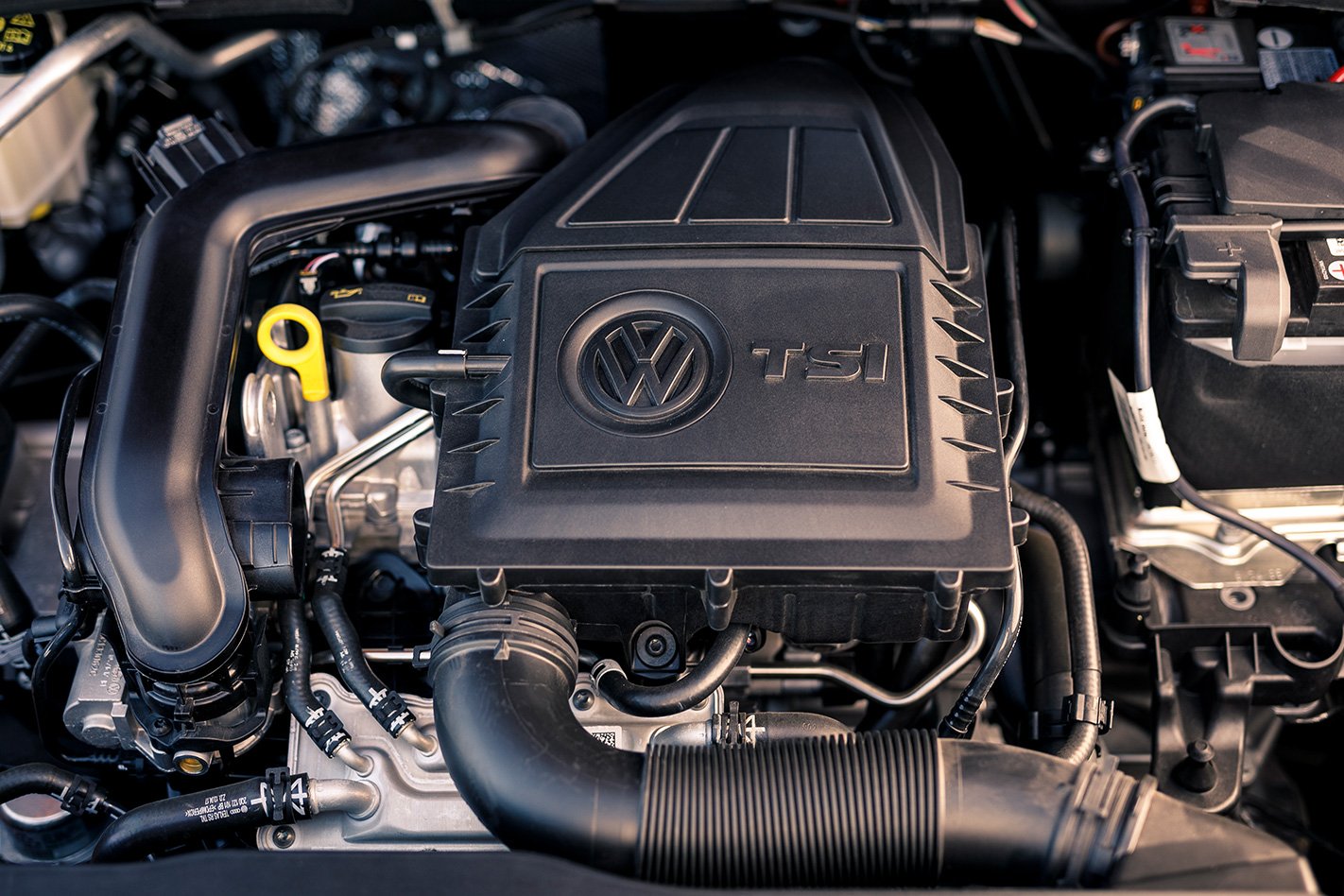
Of the two, it’s the Suzuki’s turbo-triple that sounds fruitier. It has a stronger beat, a more obvious boosted rush, and better driveability in most situations. Despite upshifting early from first to second gear (at just 5400rpm) and refusing to hold manually selected ratios near redline (even with the shift lever in ‘M’ mode, for ‘manual’), the Swift’s urge is so strong that you can easily drive around its calibration question marks.
The Polo, on the other hand, sounds a little strained as it stretches to its 6200rpm upshift point, with a weaker thrum in its induction soundtrack, and an annoying propensity to grab the highest gear possible, as soon as possible, in Drive. A quick pulse to Sport mode fixes that issue, but it also makes the Polo’s throttle overly sensitive – exposing the tiresome lag between the idle-stop system being switched off, and the somewhat snatchy engagement when it resumes drive.
You can switch this stop-start system off, of course, but it reengages every time you restart the Polo. The Swift has no idle-stop system for Australia, and only a marginal fuel-use penalty because of it.
Polo – 15/20 Swift – 16/20
WARRANTY & SERVICING Across the first five years of ownership, there’s barely anything in it cost wise – the Polo (at $2404) winning by 48 bucks. But the Swift GLX needs to be serviced more regularly – every six months or 10,000km – compared to the Polo 85TSI (12 months or 15,000km).
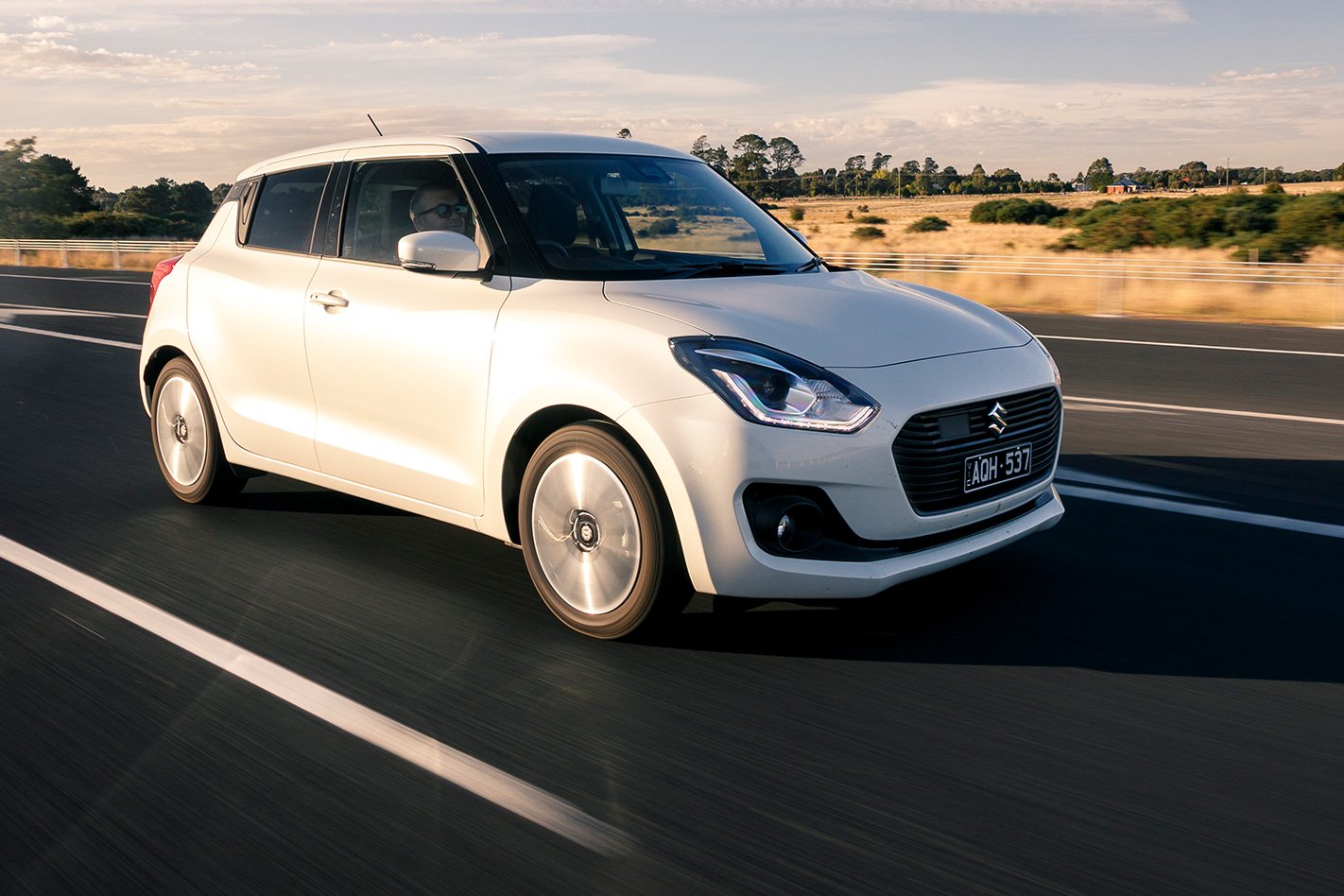
Visit an official Suzuki dealer every six months for a service and you’re eligible for an extended five-year/140,000km warranty, but not if you follow the distance limit instead (in which case, your warranty will be three years/100,000km). Capped-price servicing ends at five years/100,000km.
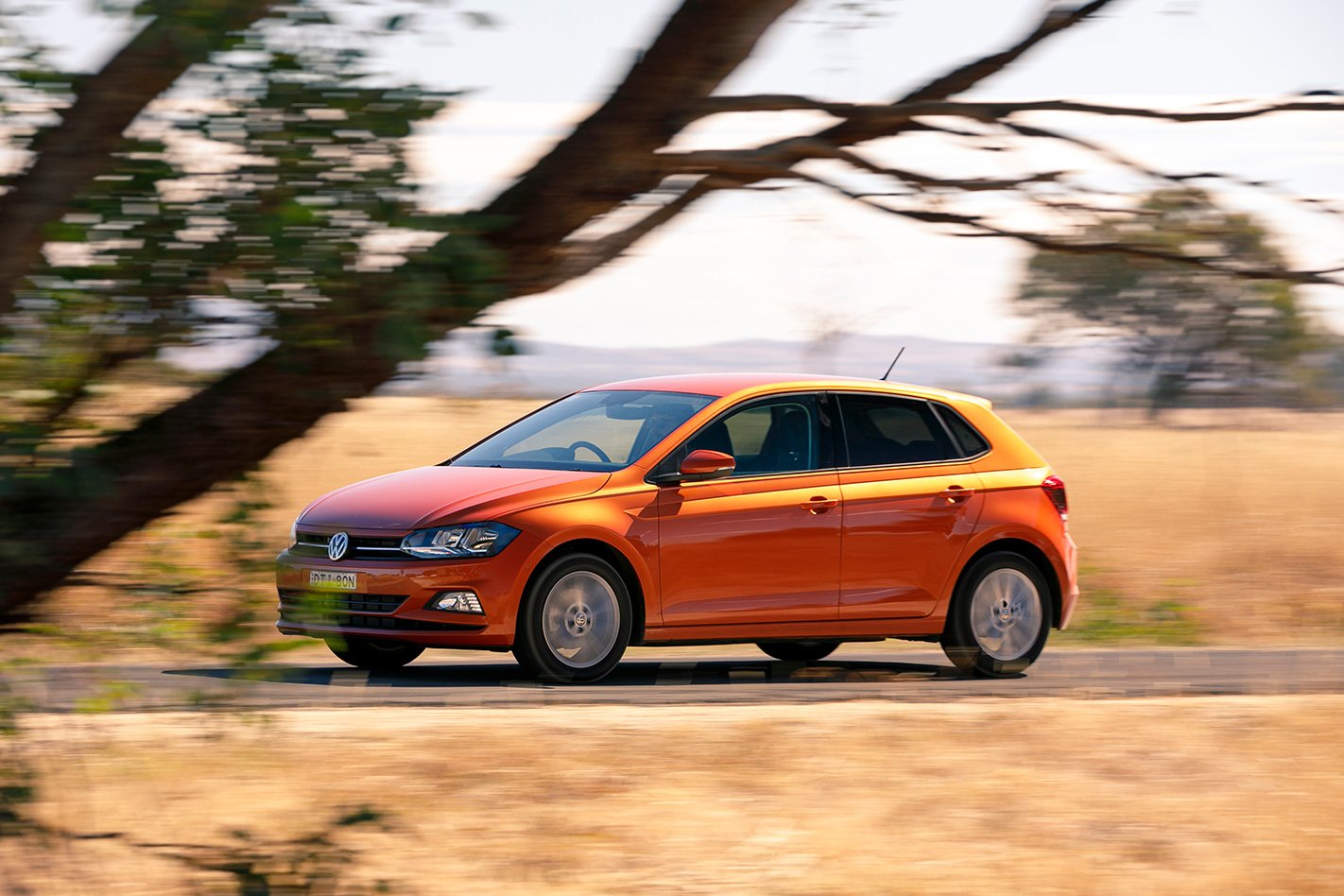
Volkswagen’s base warranty is three years/unlimited kilometres, but there’s also a three-year/unlimited-distance paint warranty, and a 12-year/unlimited-distance anti-corrosion warranty for the main steel body structure.
According to Glass’s Guide, both cars will retain 54 percent of their value after three years. And based on a 35-year-old male living in Chatswood NSW, with a full no-claim bonus and zero finance, the annual insurance bill for the Polo 85TSI will be $721, or $29 less than the Swift GLX.
Polo – 16/20 Swift – 15/20
VERDICT In many ways, the Polo 85TSI Launch Edition easily justifies its $2500 premium over the Swift GLX Turbo. It’s a more refined, more consistent, more expensive-feeling car than the Suzuki, with a much higher-quality cabin, a bigger boot, a noticeably superior ride on rough roads and a flashier badge.
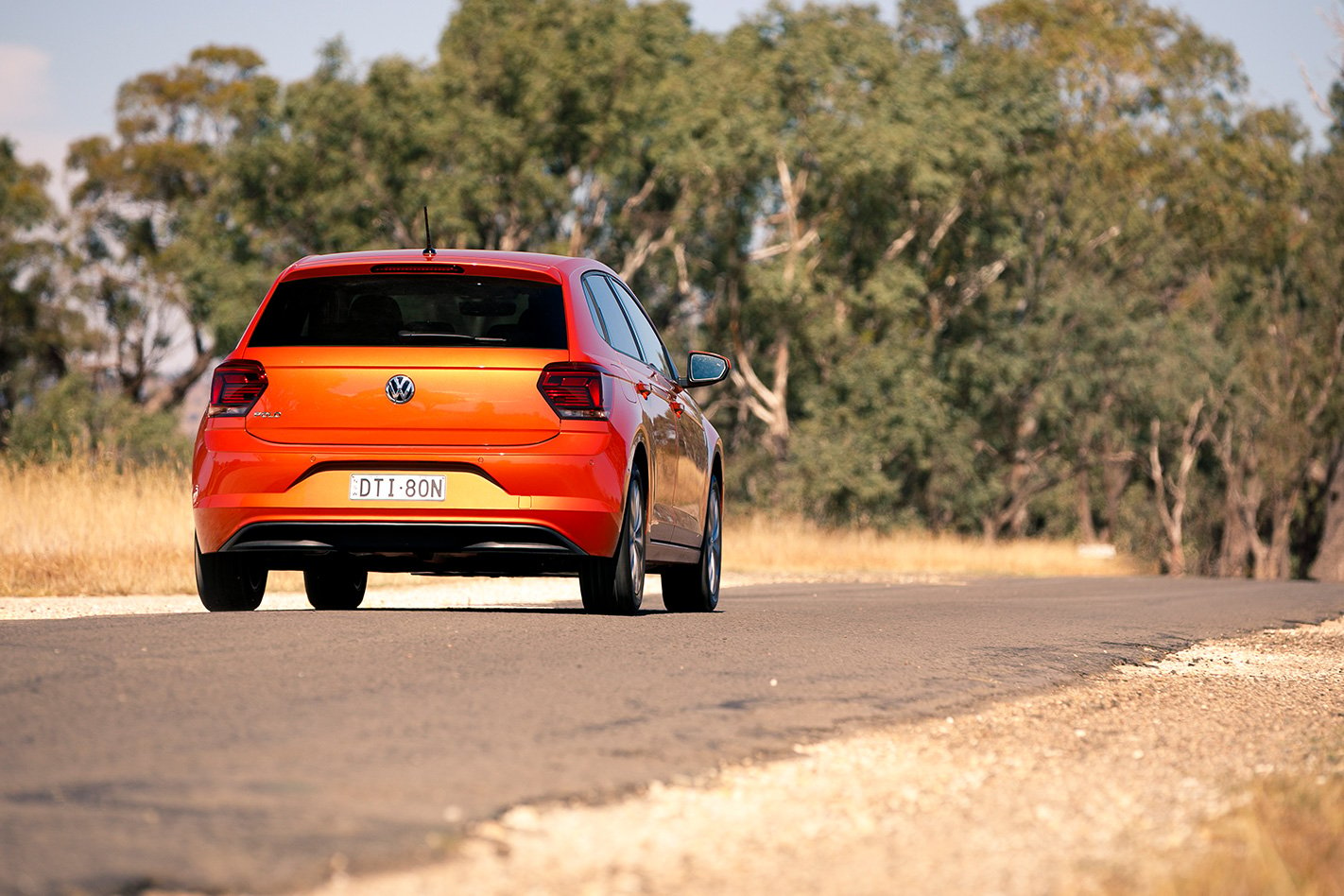
But unless you’re driving the absolute tyres off it, the Polo can also feel a tad colourless and lacking in the sort of flair that would make it truly great. And then there’s the aspect of its styling. Clean and neat, perhaps, but from some angles it looks bland in the extreme, with just one bright colour on offer (orange). And even though its turbo-triple petrol is both amply gutsy and stunningly economical, it lacks the sweetness and spirit of the 1.2-litre turbo-petrol four it effectively replaces.
The Swift is a flawed car, no question. It will bottom out on bad roads, its interior plastics are below par, and its entire central control interface can be infuriating. But it has the personality the Polo lacks much of the time, and it’s a ball to drive on the right road. Excellent cabin space too, and terrific seats. When it comes down to it, though, the patchy Suzuki simply doesn’t have the polish or sophistication to beat its Volkswagen rival.
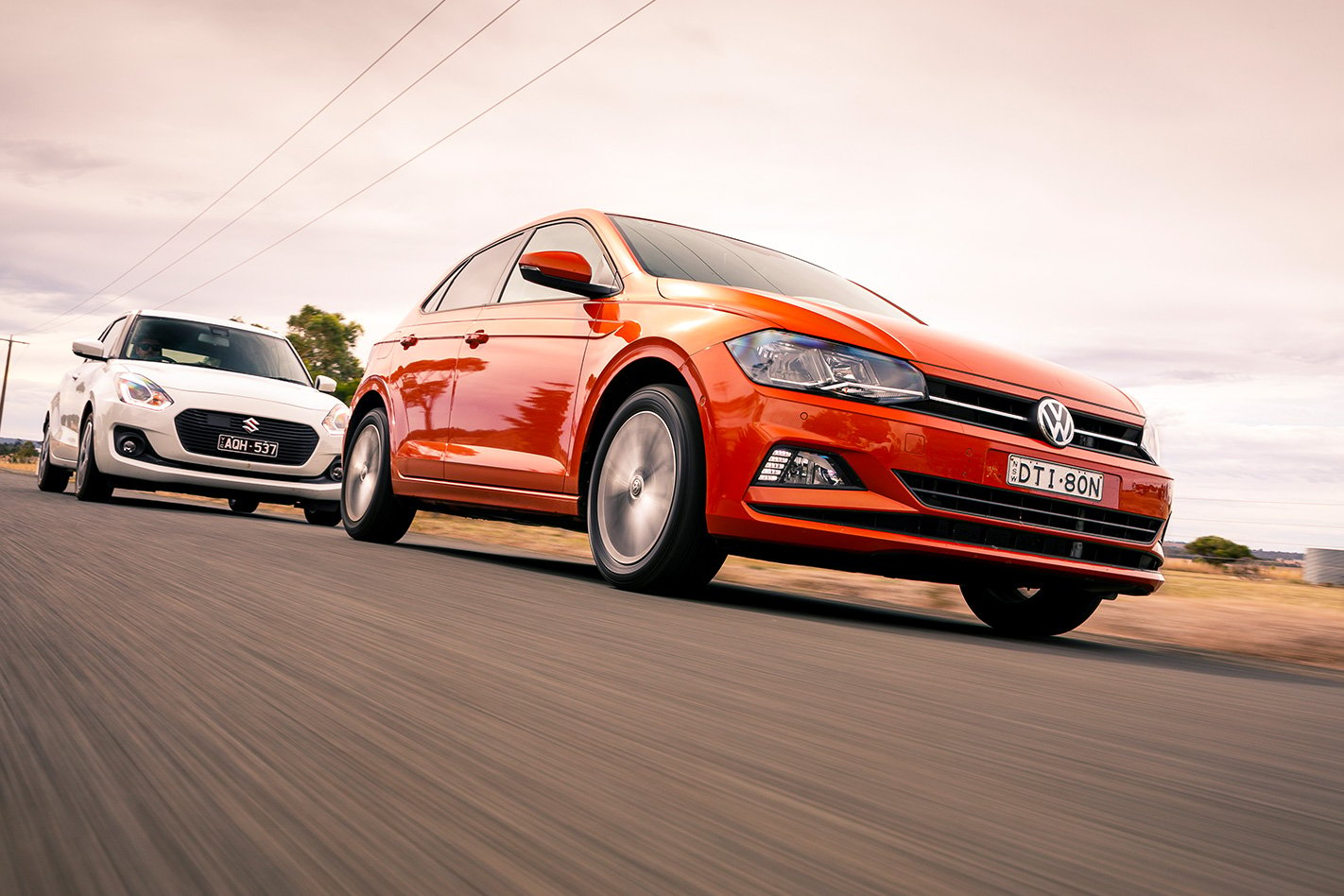
Given that you’ll pay nothing more for Polo ownership besides the initial purchase price – and have the choice of going slightly higher or lower in model grade if this Launch Edition doesn’t quite suit – it deserves to win here. Intelligent, efficient and hugely versatile, it’s merely a decent set of optional wheels away from looking like it’s worth the coin.
Polo – 79/100 Swift – 74/100

